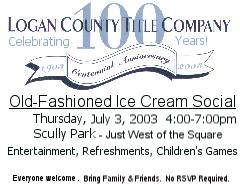|
"I was looking at some records
from the 1970 U.S. Census, which indicated that there were just over
100,000 farms in Illinois. The question at that time was, 'What can
we do to save the family farm?' According to the latest census, we
have about 71,000 farms in Illinois and, after a hiatus, we are back
to aski these questions again."
However, the answers have
changed over the decades that the Pennsylvania native has served in
the U of I's College of Agricultural, Consumer and Environmental
Sciences.
A Peace Corps veteran, Sofranko
arrived on campus in April 1970 fresh from earning his doctorate at
Penn State University. He joined a rural sociology group in the
then-Department of Agricultural Economics that was one of the most
respected in the world. Colleagues such as Fritz Fliegel, Harvey
Schweitzer, John van Es and Jerry Robinson either had or were
establishing important reputations in both scholarly and extension
work. Another colleague, Dave Lindstrom, was interested in rural
youth -- keeping them in the community, along with their skills and
aspirations, and how rural school quality could help this goal.
"Each summer, we hosted a
church-campus institute that focused on rural communities and their
problems," he said. "It was primarily attended by ministers of rural
churches who wanted to learn more about not only the problems in
their communities but how to address them."
Identifying and meeting the
challenges of Illinois's rural communities was the focus of
Sofranko's work with U of I Extension. Along with van Es, Sofranko
logged many miles traveling to community meetings to share U.S.
Census data about a county or a community and explain how to use the
data to get a better understanding of the local people and
communities.
"This was in the era before
computers became common, and we used handmade maps to show various
demographic characteristics of an area and shared the census
information with people," he said. "In the early 1980s, computer use
became more widespread, and the local communities could do a better
job of getting that information themselves. What we used to go out
and tell them, they now get on their own. Local newspapers have also
played a big role in this transition."

Another joint Sofranko-van Es
project involved research on farmer adoption of no-till practices.
Their research showed that the quickest adapters of no-till, which
in the early 1970s was a fairly controversial practice, were
southern Illinois farmers.
"First, they were influenced by
George McKibben, an Extension specialist at the Dixon Springs
Research center. He was like a prophet in the wilderness. I don't
know if he ever got the appreciation he truly deserved for his
efforts," said Sofranko.
What McKibben's preaching
didn't achieve, the topography of the region and the profit motive
accomplished.
"We discovered that the
southern Illinois early adapters were looking for something that
would allow them to bring sloping land back into production," he
said. "So a practice that was so attractive from a conservation
perspective -- stopping erosion -- may have had the opposite effect
in southern Illinois."

During his first two decades on
the faculty, Sofranko was also deeply involved in a number of
international agriculture projects in places such as Ghana, Ivory
Coast, Zambia, India, Brazil, Nepal, Rwanda and Pakistan. Often this
involved short stints overseas, and for a number of years Sofranko
and other faculty and Extension specialists frequently spent
six-week or greater stints in other countries.
"One of the remarkable side
benefits of these activities was getting to work with some of the
international experts in the college, such as Bill Thompson, Jack
Claar, Russ O'Dell and Marlowe Thorne," said Sofranko.
A constant during his career,
however, has been a focus on rural Illinois and its challenges. For
many years, conventional wisdom held that the way to improve rural
Illinois communities was to increase prices for commodities or
government payments to farmers. In one sense, it was a trickle-down
theory: Better income preserves the family farmer, who then spends
money in local communities, thereby reinvigorating the economy.
"For a long time, we thought if
we held the family farm, that we would help the rural economy. That
turned out to be a mistaken assumption. Over the years, a lot of
rural areas haven't fared well even though the farmers around them
did," he said.
[to top of second column in
this article]

|

"Today, the consensus is not
only that we cannot do much about continued concentration in
production agriculture, which leads to fewer farms, but also that
increasing farm incomes does not necessarily save small communities.
Recent studies show that the
average annual income for a farm family is about $54,000. "That's
the good news," he said. "It appears that economically farm families
are doing all right. The bad news is that only about $12,000 of that
figure comes from the farm.

"This is the biggest change
I've observed in my career -- the increasing importance of off-farm
income to producers and the resulting impact on families and
communities."
One of the best ways to
actually preserve the family farm in light of this, he said, would
be rural economic development that creates jobs that can be filled
by men and women who want to stay in farming but need a significant
amount of non-farm income.
However, Sofranko wonders how
effective that might be in the long run. Many of the families that
choose to stay on the land are willing to settle for a small return
on a large capital investment.

"One Extension county adviser
told me once that there were some people who were content to make
$35,000 per year on a $3-4 million investment," Sofranko recalled.
"What happens when those people die out or retire? That's probably
when some major agricultural changes will take place."
Another Sofranko study in
recent years came across that phenomenon in western Illinois, which
has a high proportion of farmers beyond the normal retirement age
who indicated that they had no desire to quit farming anytime soon.
That study was part of
Extension's Value Project, a Council for Food and
Agricultural Research-funded
program. Another study for the program revealed a wide array of
sideline businesses launched by farm families to bring outside
income to the farm, including everything from pet grooming to tax
preparation to custom field work.
"Time after time we see farmers
adapting in myriad ways," he said. "One is, of course, to quit
farming, but others have been able to cobble together unique ways of
remaining on the farm."
Sometimes research can find
striking parallels in agriculture practices in disparate societies.
While in the Peace Corps in Africa, Sofranko became interested in a
production system that featured a larger number of small, widely
scattered plots tended by one farmer. One of his doctoral students
studied these small, fragmented pieces of land among farmers in
Rwanda. A few years ago, while preparing another survey among
Illinois farmers, he decided to put in some questions regarding how
many parcels of land Illinois farmers were working and the level of
geographic disbursement.
"In Rwanda, the typical farmer
had nine parcels of land on average with total acreage of five
acres, "he said. "To our surprise, the Illinois survey showed about
the same average number of separate parcels, though here the acreage
per parcel was higher. We call this land fragmentation, and it has
implications not only for producers who farm widely scattered
parcels but for rural bridges and roads upon which farm machinery is
being moved."
One key to the future of rural
Illinois, Sofranko believes, will be getting farmers involved in
economic development in their communities. Agro-tourism holds out
promise as it brings in tourists or hunters who spend money in local
communities. Many farmers, too, are interested in ethanol production
-- even willing to put up money in order to get an ethanol plant in
their area.
"Perhaps we are seeing the
beginnings of a new relationship between agriculture and the economy
of rural communities," he said.
Having taught his last class
and advised his last student, Sofranko's final days at the U of I,
where he now serves in the Department of Human and Community
Development, largely consist of sorting old files and memories. At
the same time, he looks forward to the future.
"In a few months, I hope to
become involved with Habitat for Humanity, building something," he
said. "I think it will be great to go home at the end of the day
knowing that instead of shuffling papers or going to a committee
meeting that you had actually built something."
Although not as tangible as a house, it is fair to say that
Sofranko's 30-year career has left behind a better rural Illinois
that has at least a fighting chance to once again defy the
conventional wisdom.
[University
of Illinois news release]
|